An epigenetic trap stabilizes singular olfactory receptor expression
- PMID: 23870122
- PMCID: PMC3929589
- DOI: 10.1016/j.cell.2013.06.039
An epigenetic trap stabilizes singular olfactory receptor expression
Abstract
The molecular mechanisms regulating olfactory receptor (OR) expression in the mammalian nose are not yet understood. Here, we identify the transient expression of histone demethylase LSD1 and the OR-dependent expression of adenylyl cyclase 3 (Adcy3) as requirements for initiation and stabilization of OR expression. As a transcriptional coactivator, LSD1 is necessary for desilencing and initiating OR transcription, but as a transcriptional corepressor, it is incompatible with maintenance of OR expression, and its downregulation is imperative for stable OR choice. Adcy3, a sensor of OR expression and a transmitter of an OR-elicited feedback, mediates the downregulation of LSD1 and promotes the differentiation of olfactory sensory neurons (OSNs). This novel, three-node signaling cascade locks the epigenetic state of the chosen OR, stabilizes its singular expression, and prevents the transcriptional activation of additional OR alleles for the life of the neuron.
Copyright © 2013 Elsevier Inc. All rights reserved.
Figures
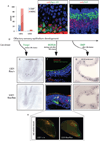
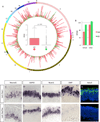

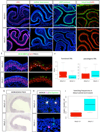
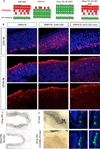
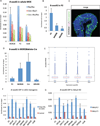

Comment in
-
An epigenetic trap involved in olfactory receptor gene choice.Dev Cell. 2013 Jul 29;26(2):120-1. doi: 10.1016/j.devcel.2013.07.011. Dev Cell. 2013. PMID: 23906063
-
Sensory systems: Making a choice and sticking with it.Nat Rev Neurosci. 2013 Sep;14(9):590-1. doi: 10.1038/nrn3572. Epub 2013 Aug 7. Nat Rev Neurosci. 2013. PMID: 23921412 No abstract available.
Similar articles
-
An epigenetic trap involved in olfactory receptor gene choice.Dev Cell. 2013 Jul 29;26(2):120-1. doi: 10.1016/j.devcel.2013.07.011. Dev Cell. 2013. PMID: 23906063
-
Rare event of histone demethylation can initiate singular gene expression of olfactory receptors.Proc Natl Acad Sci U S A. 2013 Dec 24;110(52):21148-52. doi: 10.1073/pnas.1321511111. Proc Natl Acad Sci U S A. 2013. PMID: 24344257 Free PMC article.
-
Sensory systems: Making a choice and sticking with it.Nat Rev Neurosci. 2013 Sep;14(9):590-1. doi: 10.1038/nrn3572. Epub 2013 Aug 7. Nat Rev Neurosci. 2013. PMID: 23921412 No abstract available.
-
Regulation of odorant receptors: one allele at a time.Hum Mol Genet. 2005 Apr 15;14 Spec No 1:R33-9. doi: 10.1093/hmg/ddi105. Hum Mol Genet. 2005. PMID: 15809271 Review.
-
Epigenetic programming of stochastic olfactory receptor choice.Genesis. 2024 Apr;62(2):e23593. doi: 10.1002/dvg.23593. Genesis. 2024. PMID: 38562011 Free PMC article. Review.
Cited by
-
Cis-regulatory mechanisms for robust olfactory sensory neuron class-restricted odorant receptor gene expression in Drosophila.PLoS Genet. 2015 Mar 11;11(3):e1005051. doi: 10.1371/journal.pgen.1005051. eCollection 2015 Mar. PLoS Genet. 2015. PMID: 25760344 Free PMC article.
-
Spatial transcriptomic reconstruction of the mouse olfactory glomerular map suggests principles of odor processing.Nat Neurosci. 2022 Apr;25(4):484-492. doi: 10.1038/s41593-022-01030-8. Epub 2022 Mar 21. Nat Neurosci. 2022. PMID: 35314823 Free PMC article.
-
Heterochromatin-mediated gene silencing facilitates the diversification of olfactory neurons.Cell Rep. 2014 Nov 6;9(3):884-92. doi: 10.1016/j.celrep.2014.10.001. Epub 2014 Oct 30. Cell Rep. 2014. PMID: 25437545 Free PMC article.
-
Class I odorant receptors, TAS1R and TAS2R taste receptors, are markers for subpopulations of circulating leukocytes.J Leukoc Biol. 2015 Mar;97(3):533-45. doi: 10.1189/jlb.2A0714-331RR. Epub 2015 Jan 26. J Leukoc Biol. 2015. PMID: 25624459 Free PMC article.
-
Maturation of the Olfactory Sensory Neuron and Its Cilia.Chem Senses. 2020 Dec 5;45(9):805-822. doi: 10.1093/chemse/bjaa070. Chem Senses. 2020. PMID: 33075817 Free PMC article. Review.
References
-
- Alon U. Network motifs: theory and experimental approaches. Nature reviews. 2007;8:450–461. - PubMed
-
- Anand R, Marmorstein R. Structure and mechanism of lysine-specific demethylase enzymes. The Journal of biological chemistry. 2007;282:35425–35429. - PubMed
-
- Barnea G, O'Donnell S, Mancia F, Sun X, Nemes A, Mendelsohn M, Axel R. Odorant receptors on axon termini in the brain. Science (New York, NY. 2004;304:1468. - PubMed
-
- Belluscio L, Gold GH, Nemes A, Axel R. Mice deficient in G(olf) are anosmic. Neuron. 1998;20:69–81. - PubMed
-
- Brunet LJ, Gold GH, Ngai J. General anosmia caused by a targeted disruption of the mouse olfactory cyclic nucleotide-gated cation channel. Neuron. 1996;17:681–693. - PubMed
Publication types
MeSH terms
Substances
Grants and funding
LinkOut - more resources
Full Text Sources
Other Literature Sources
Molecular Biology Databases
Research Materials

